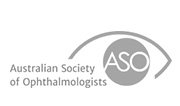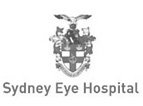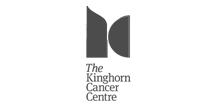Macular Degeneration (AMD)
The macula is the central portion of the retina, the photosensitive layer at the back of the eye. The macula is responsible for central vision which helps us focus and see fine details and colours. Central vision enables us to read, recognize faces and drive. Degeneration of the macula affects the central vision making these daily activities difficult.
Macular degeneration is one of the leading causes of blindness.
What are the types of macular degeneration?
There are two types of Macular degeneration: dry and wet.
Dry macular degeneration is the most common type affecting 85-90% of cases. It is characterized by an increase in the number of small yellow protein deposits under the retina called drusen, which are built up metabolic waste products. This results in the degeneration of photoreceptors in the macula. Most commonly it is age-related, occurring in people over the age of 55 years.
Wet macular degeneration occurs due to abnormal proliferation of fragile and leaky blood vessels below the macula, causing retinal damage. This condition is less common and more serious as vision loss progresses rapidly in a matter of days or weeks. A large majority of legal blindness cases were previously attributable to wet macular degeneration, prior to effective treatments being available. Fortunately in the mid-2000s new treatment modalities were introduced. These treatments involve depositing medication directly into the eye. These treatments have had a significant impact on interrupting the development of blindness.
What causes macular degeneration?
Macular degeneration is more likely in patients over the age of 55 years, women, those with a positive family history, smokers, those with a history of prolonged sun exposure, high blood pressure, obesity and a history of macular degeneration in the other eye.
What are the signs and symptoms of macular degeneration?
Macular degeneration may go unnoticed in the initial stage especially if it is only present in one eye. There is no redness or pain in the eyes. As the disease progresses, there are distortions of straight lines, blurriness or shadowing in the centre of your visual field. This causes difficulty with reading, recognizing faces and observing colour and fine detail.
In the advanced stages of dry macular degeneration, the blurriness progresses to a spot of missing vision, usually central in the vision field, that gradually increases in size.
In wet macular degeneration, vision loss is much more rapid and severe. In both dry and wet macular degeneration it is common to have a distortion in the vision, for example straight lines appear as wavy and curved lines to the patient.
How is macular degeneration diagnosed?
If you have blurry vision or other eye symptoms it is necessary to consult an eye specialist. A comprehensive eye examination with specific tests including visual acuity test will be performed.
An Amsler grid is a simple screening tool which consists of evenly spaced vertical and horizontal lines. One of the signs of macular degeneration is the appearance of wavy or distorted lines.
The retina is examined for signs of macular degeneration such as increased drusen, degeneration or thinning of the deep retinal layers or increased vasculature below the retina. Optical Coherence Tomography (OCT) is often performed and various specialized tests such as fluorescein angiography may also be performed. These tests provide a detailed view of the retina and its blood supply.
What is the treatment?
There is no current treatment available for dry macular degeneration. Vitamin supplements, antioxidants and zinc as well as a diet rich in fruits, vegetables, whole grains, omega-3 fatty acids, reduced intake of unhealthy saturated fats and cessation of smoking may decrease the rate of progression of the disease.
The treatment for wet macular degeneration involves destroying the abnormal blood vessels and preventing their further growth. This may be accomplished by
- Laser. This is now rarely used
- Photodynamic therapy to destroy the abnormal blood vessels
- Anti-VEGF therapy to stop or slow the growth of the abnormal blood vessels. The medication is delivered directly to the eye. Improvement in vision has been noted with this treatment. Improvement in vision has been noted with this treatment.

















